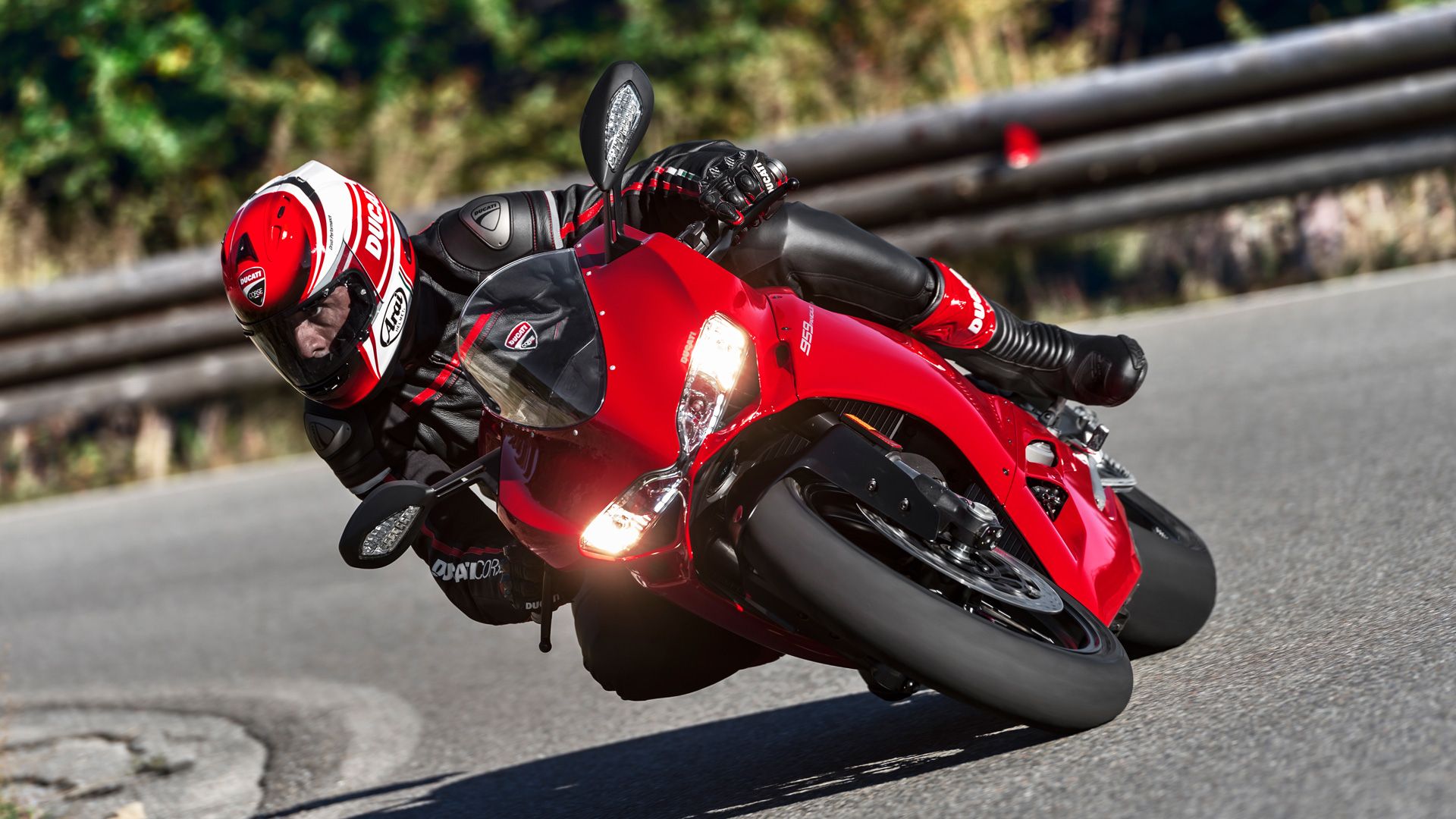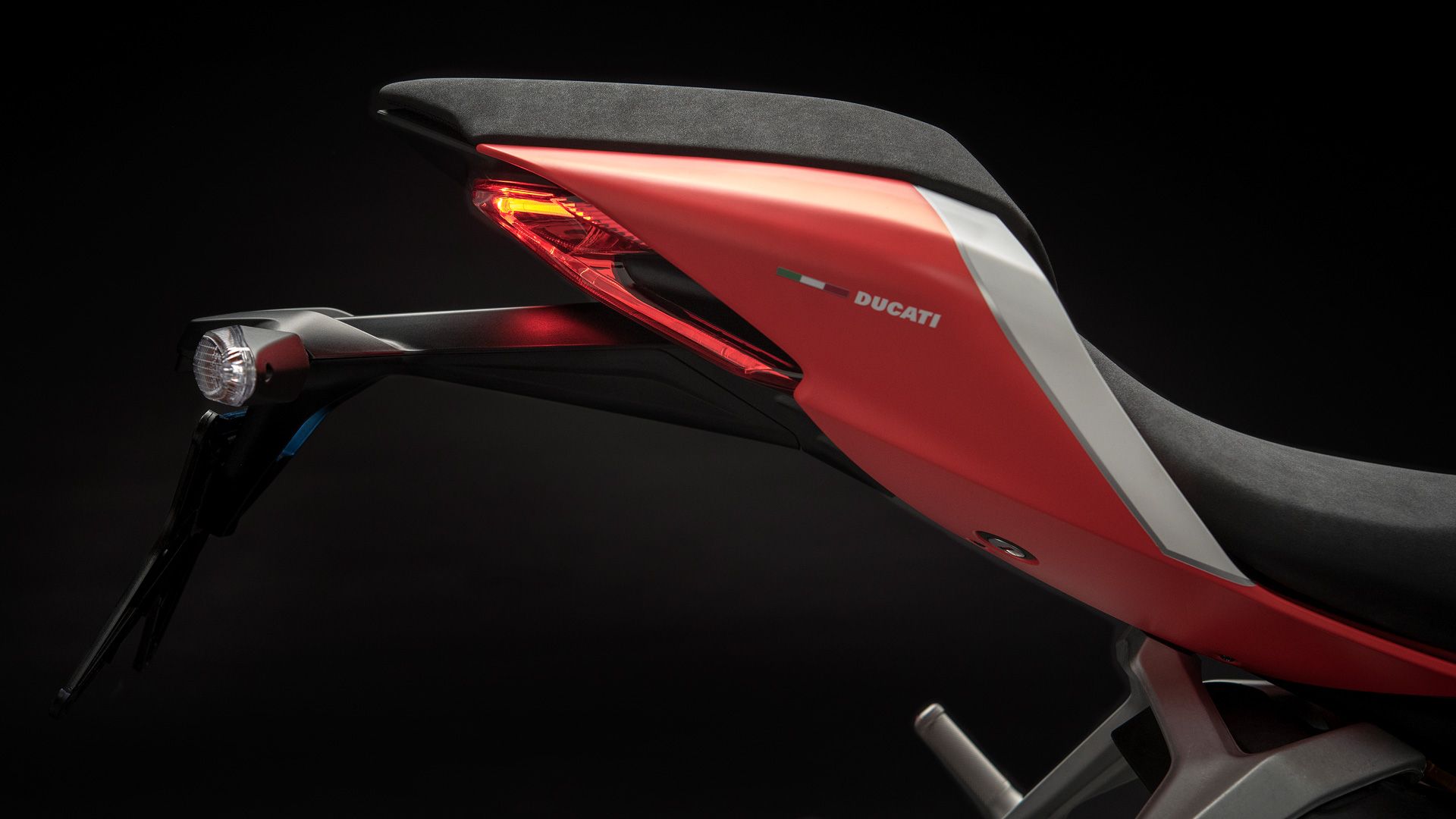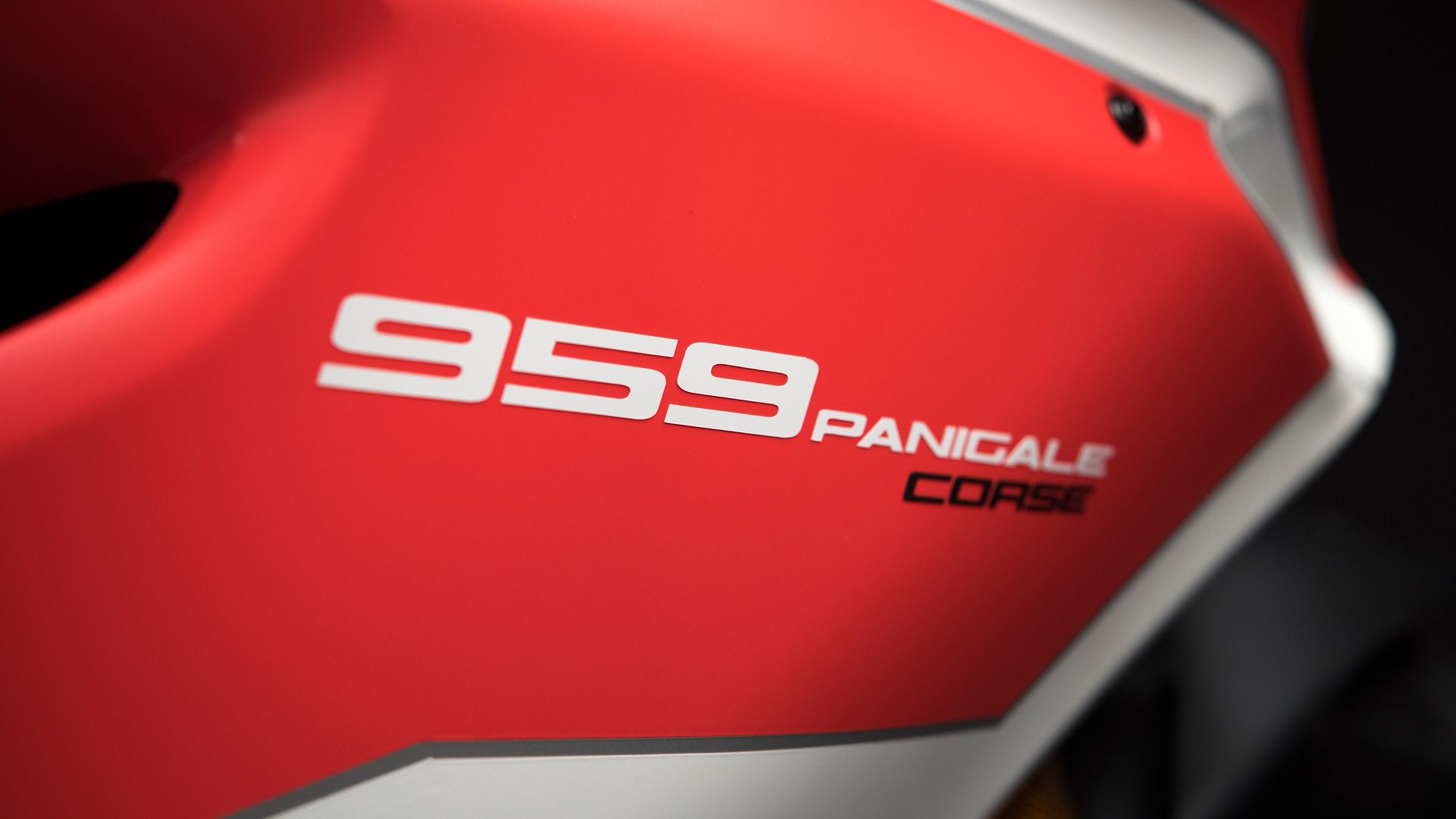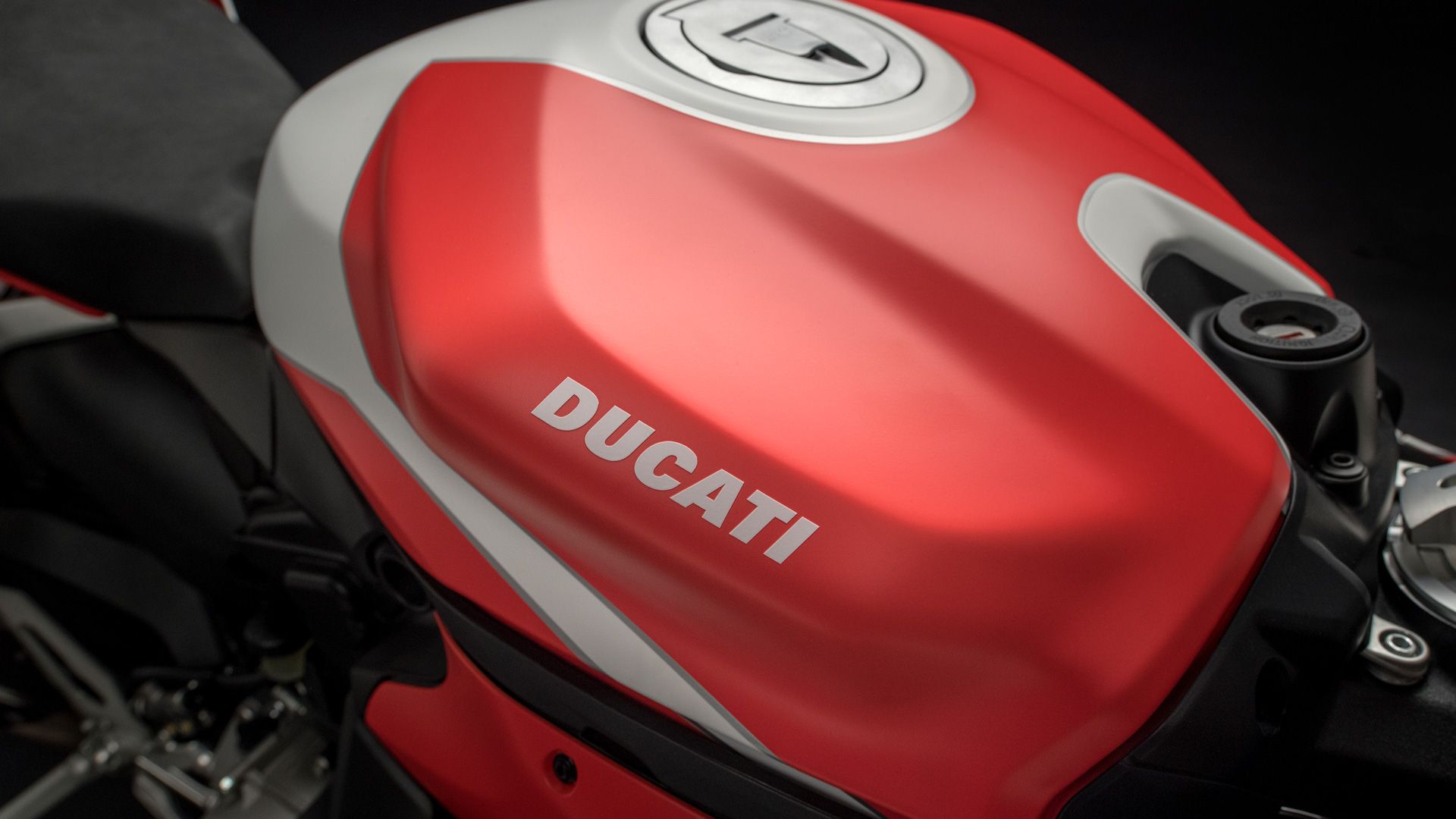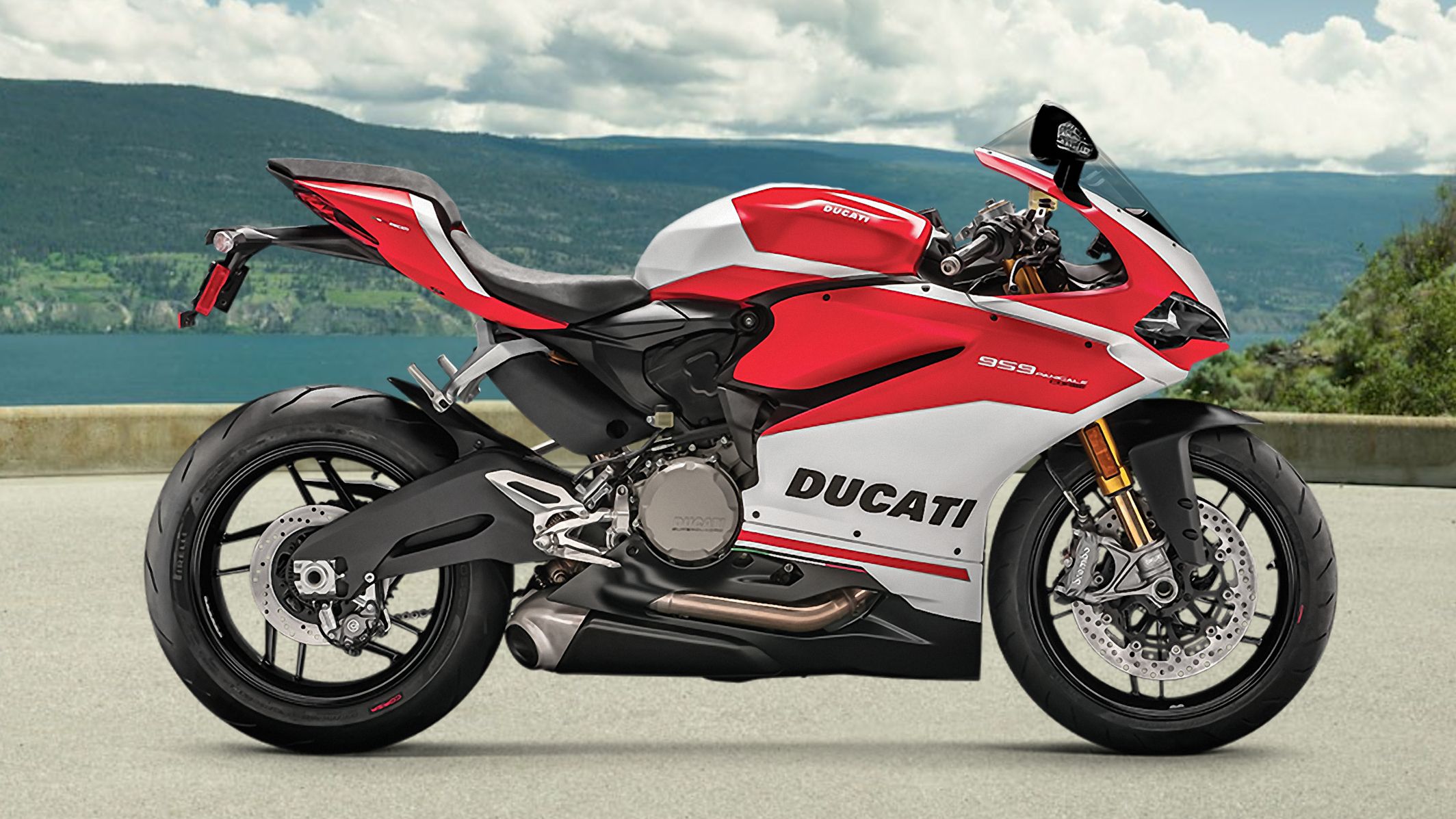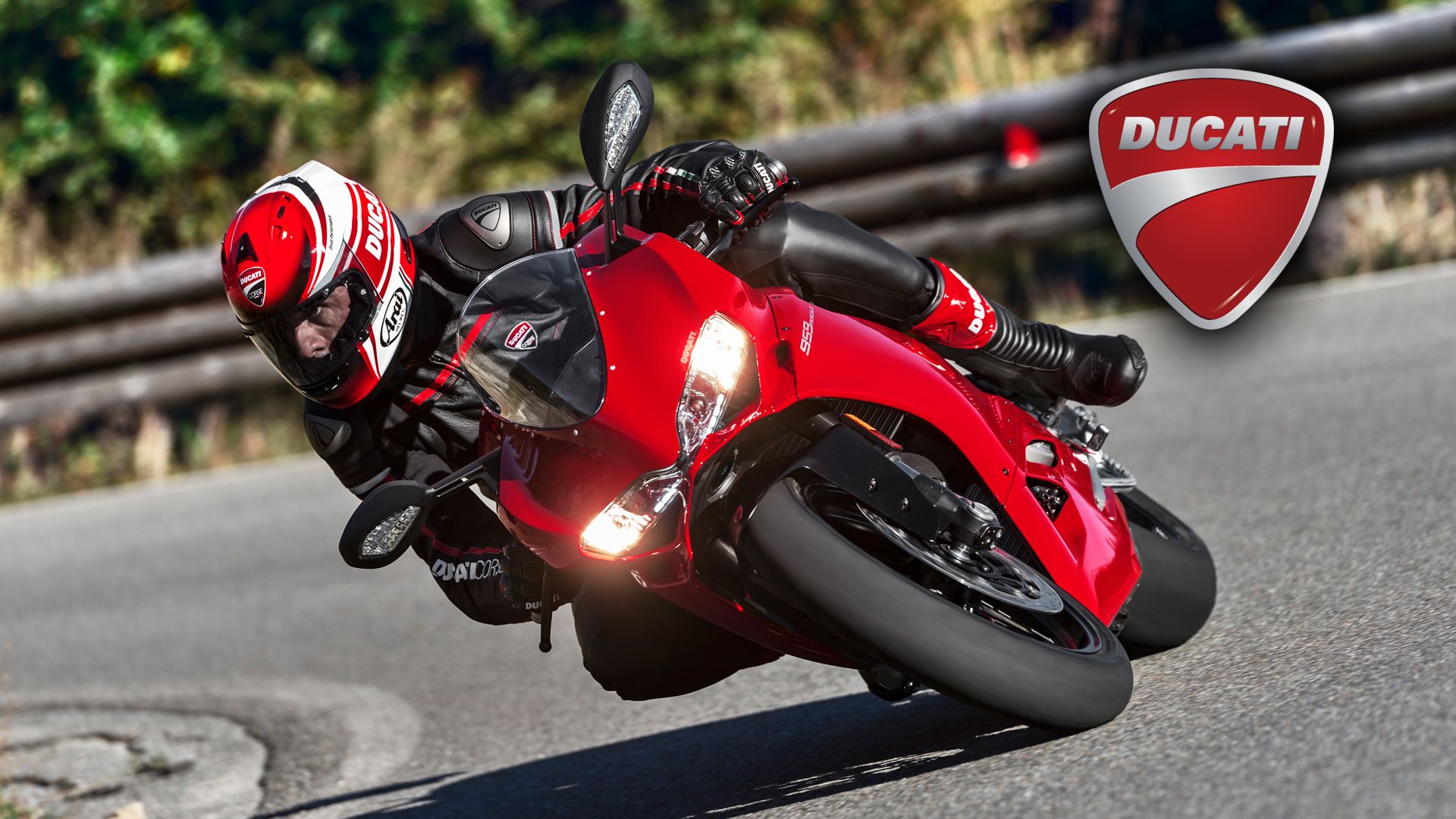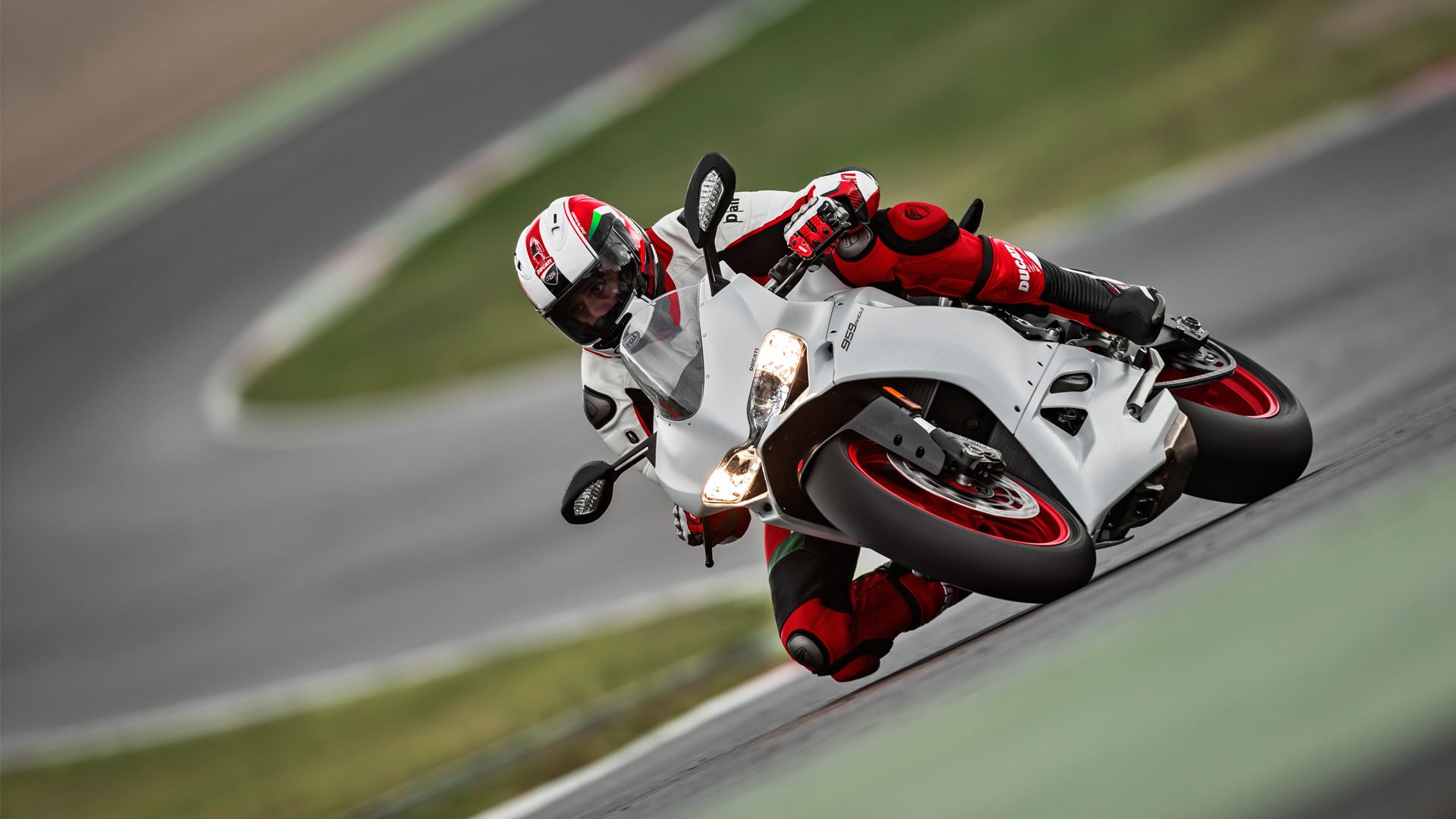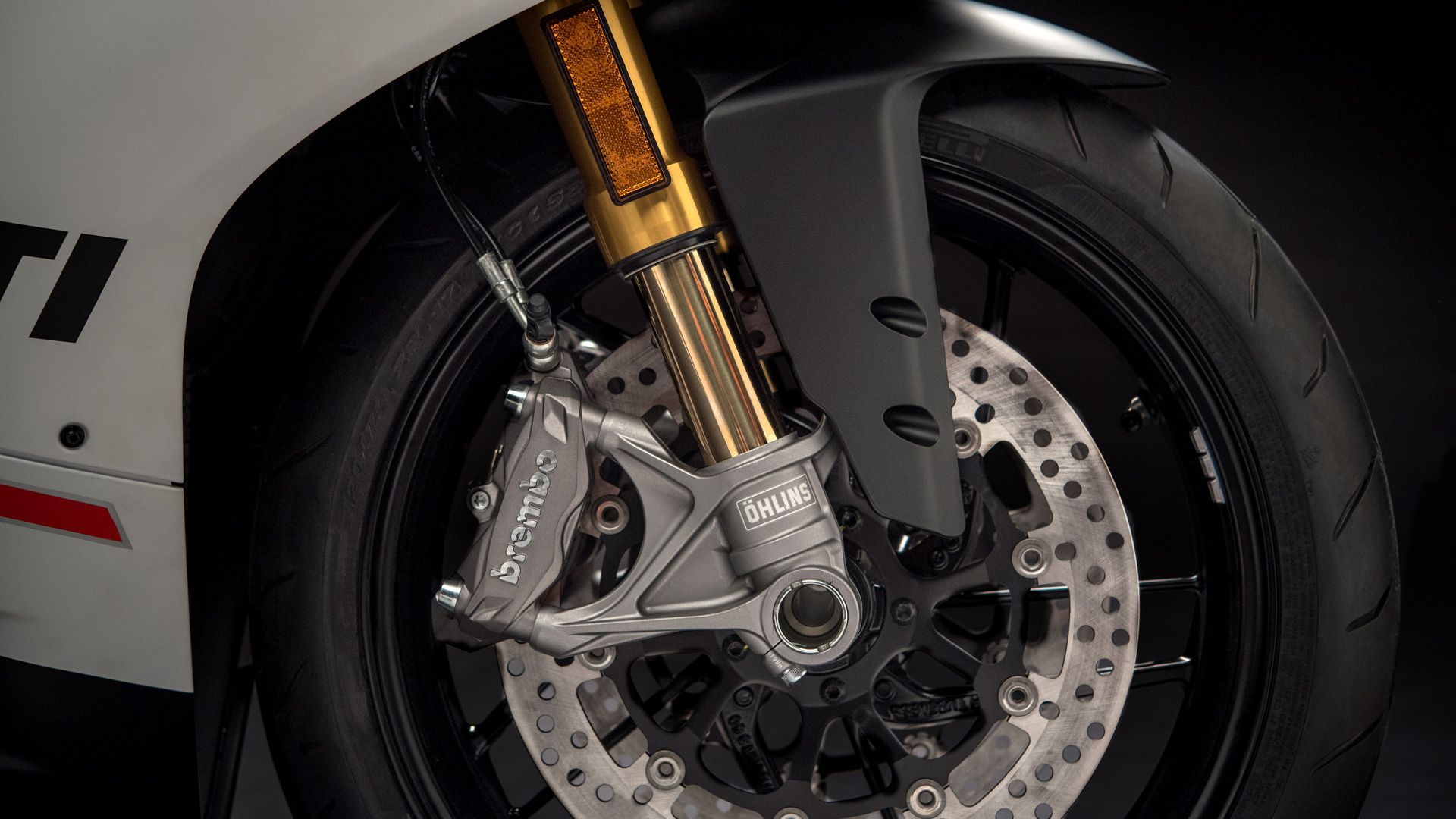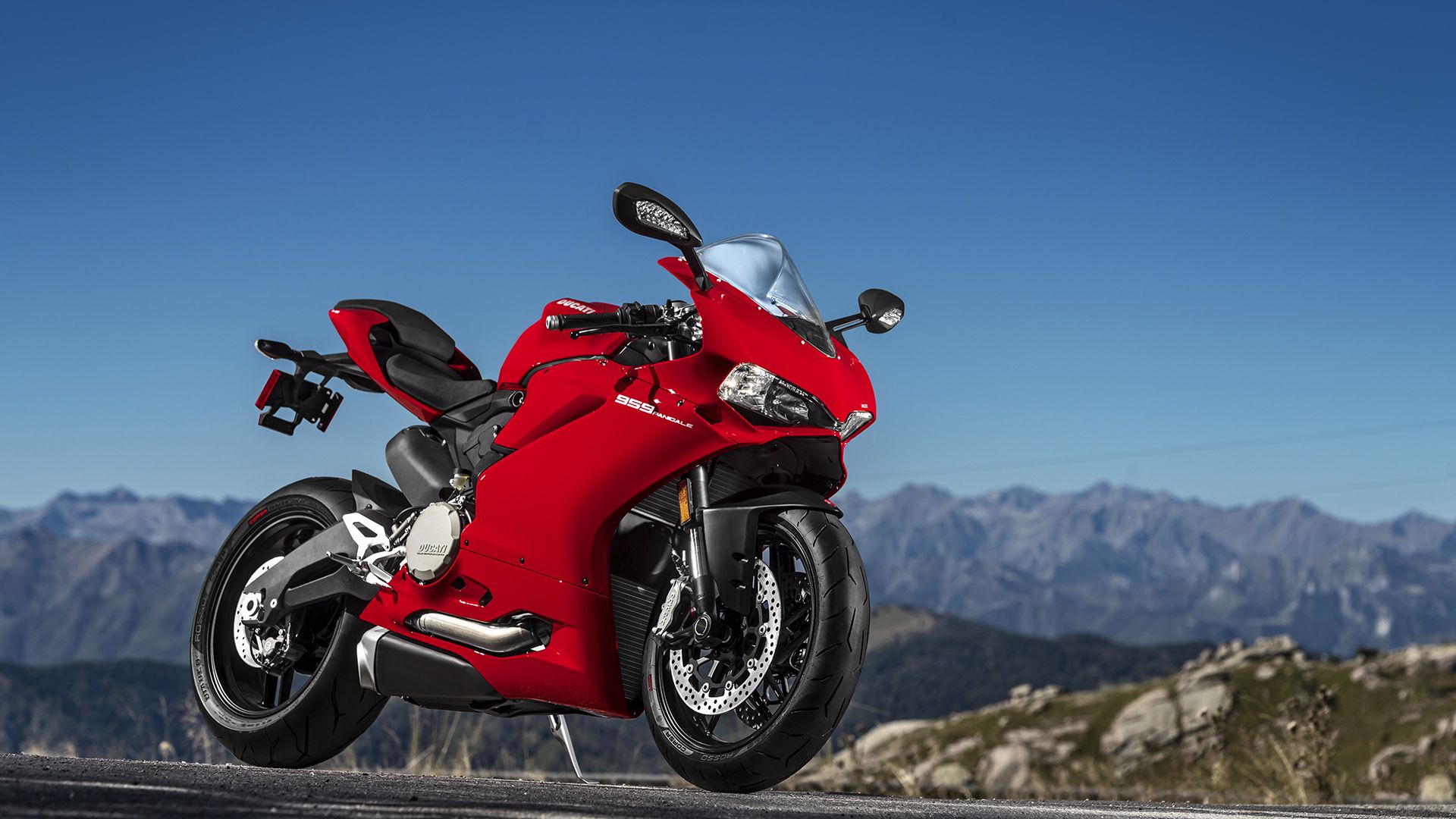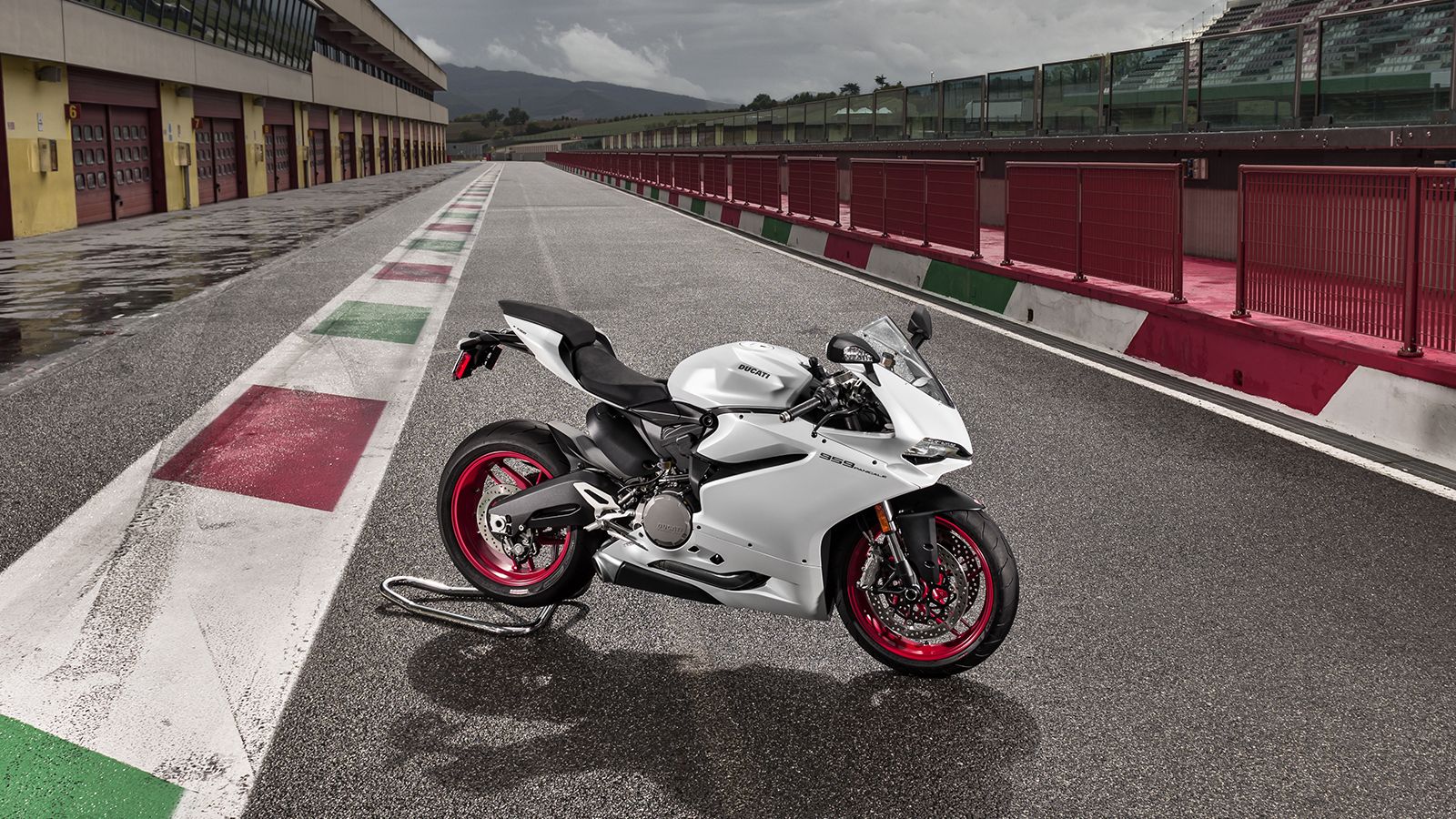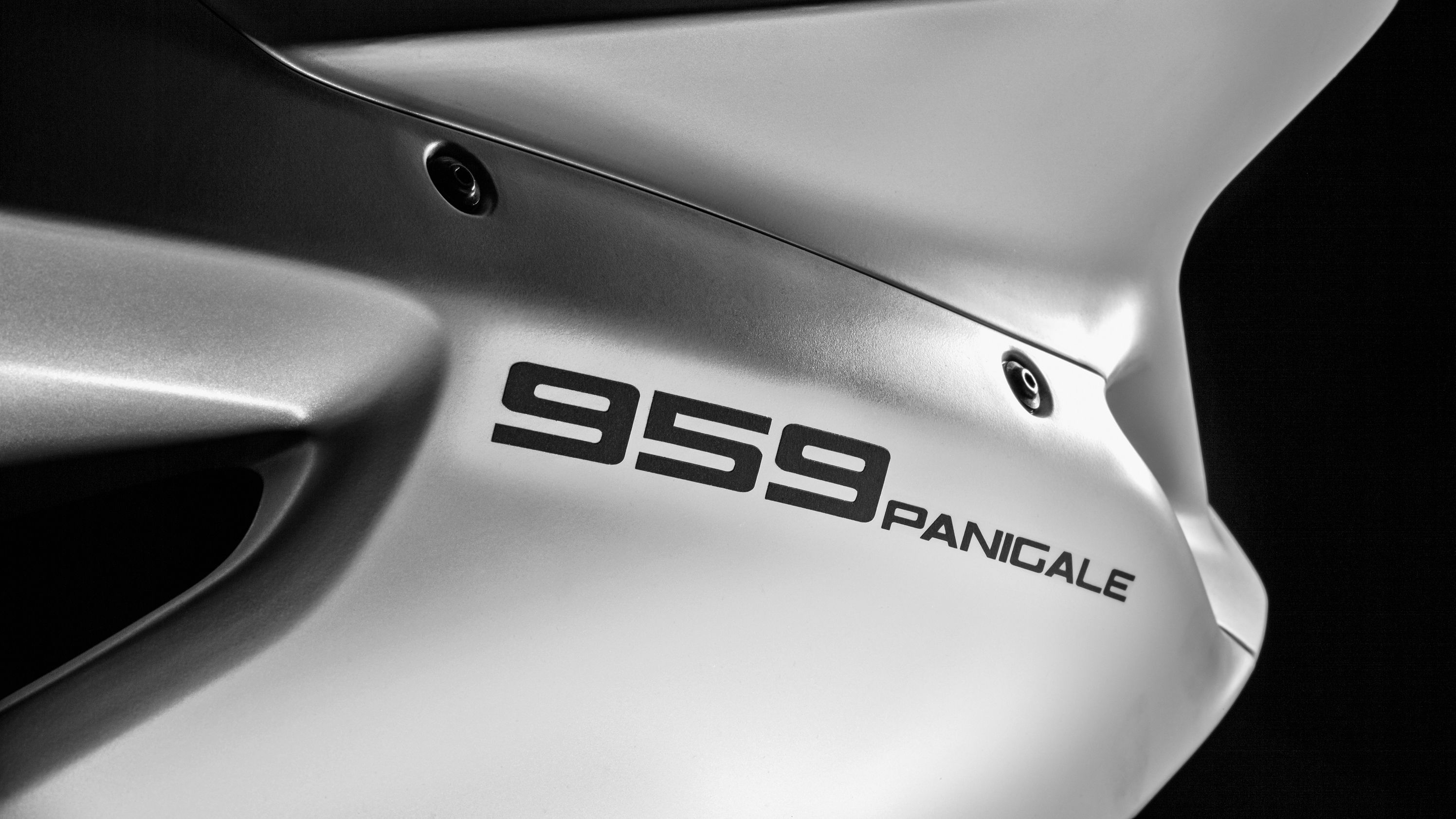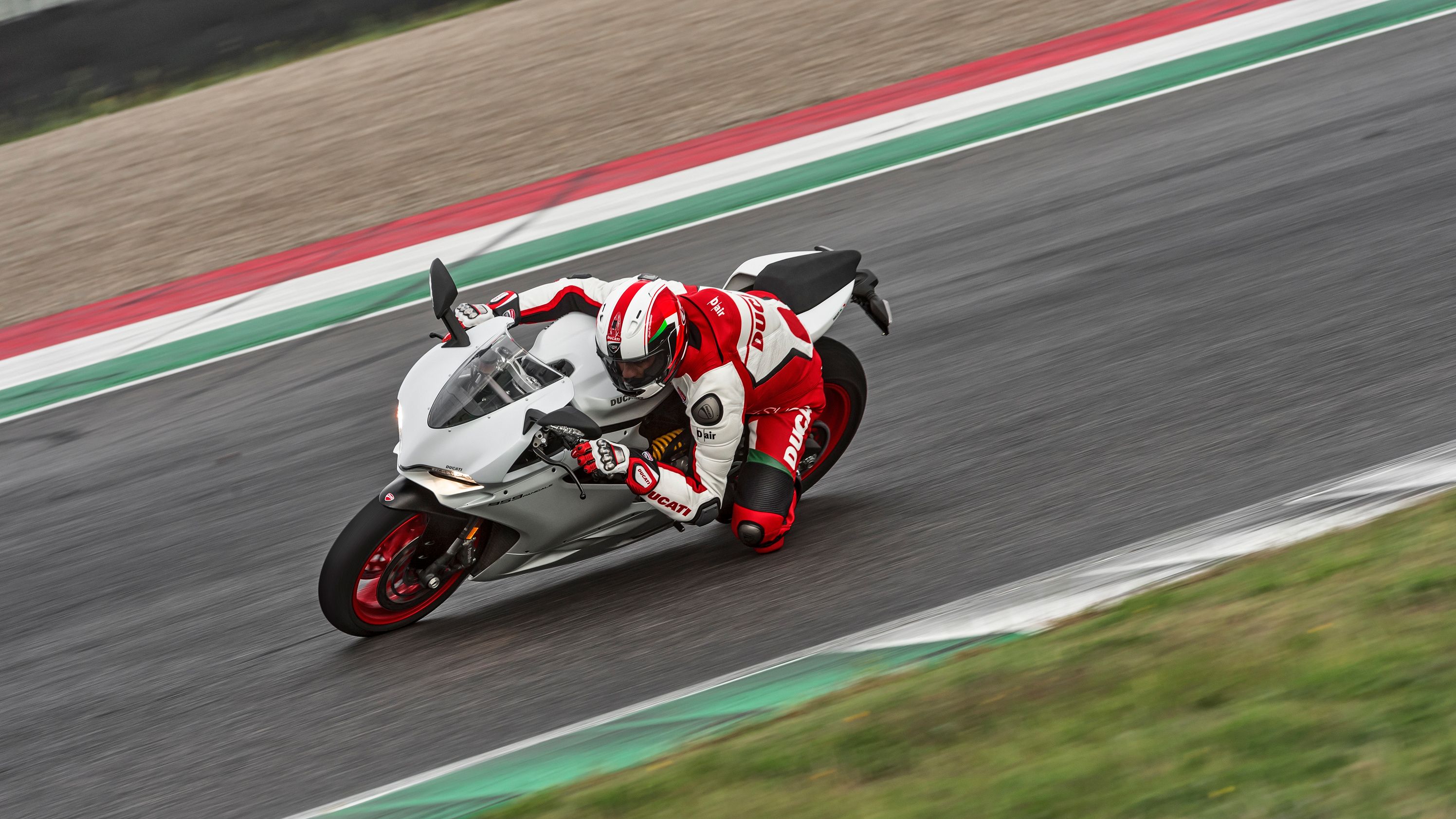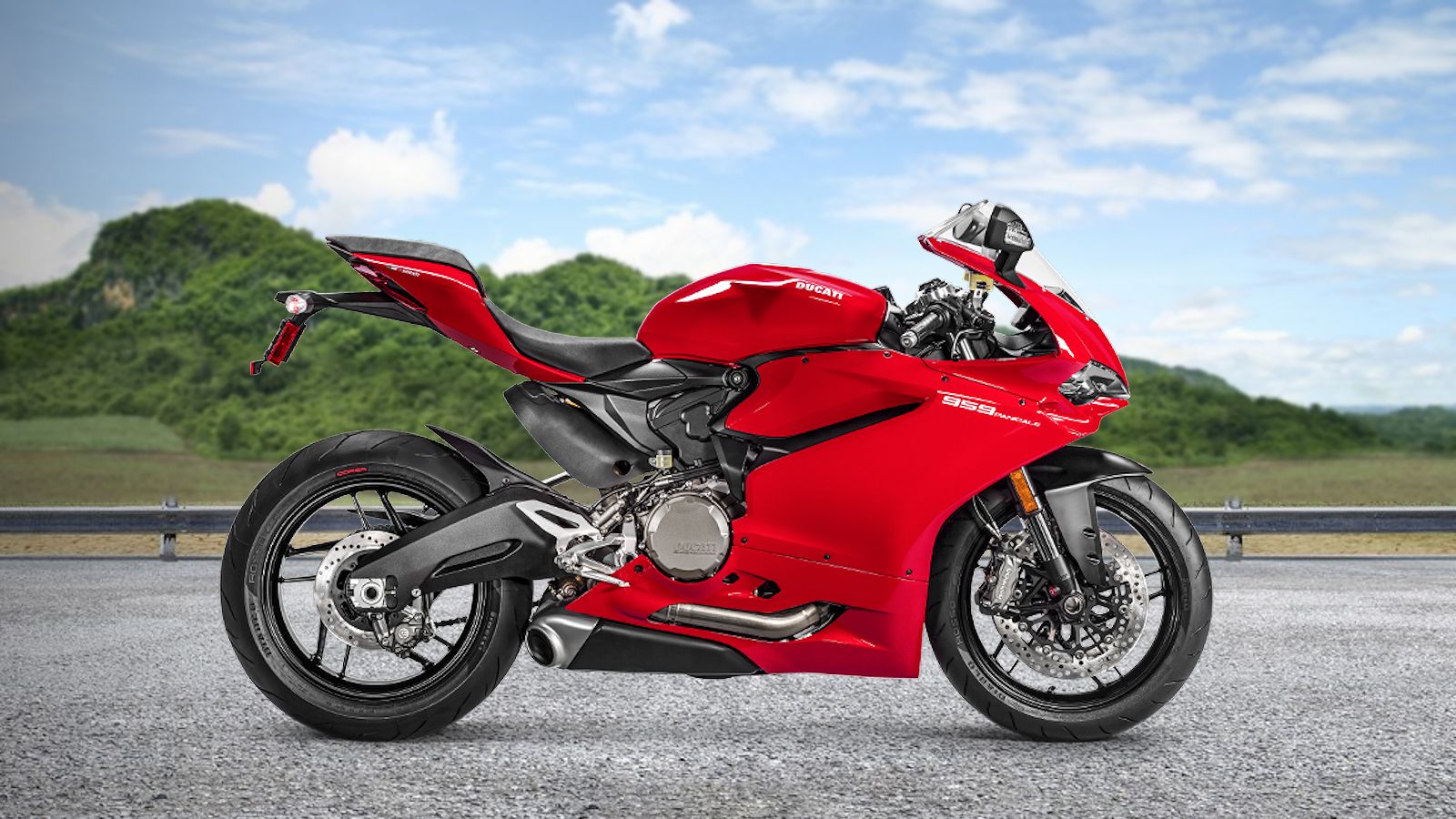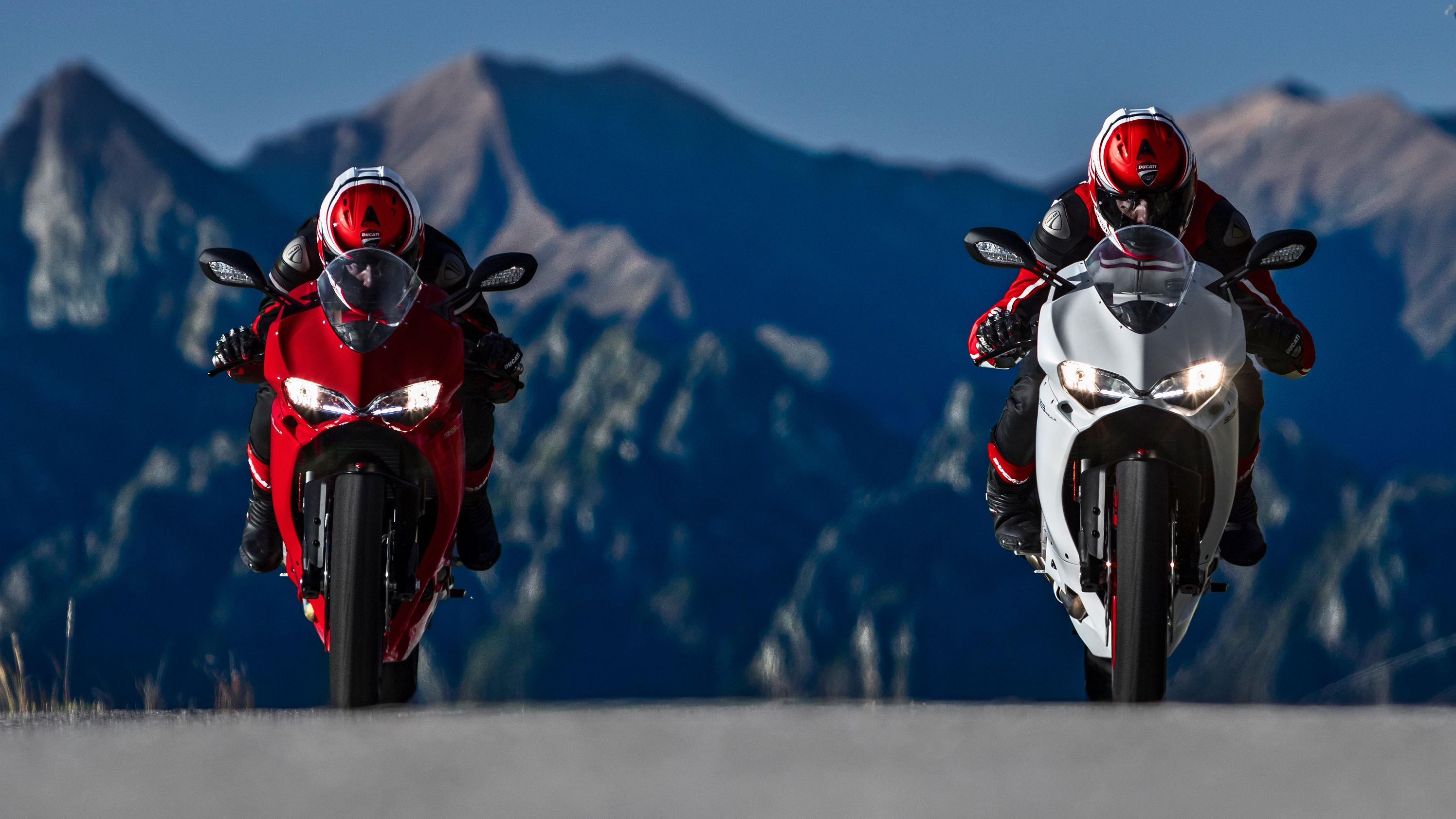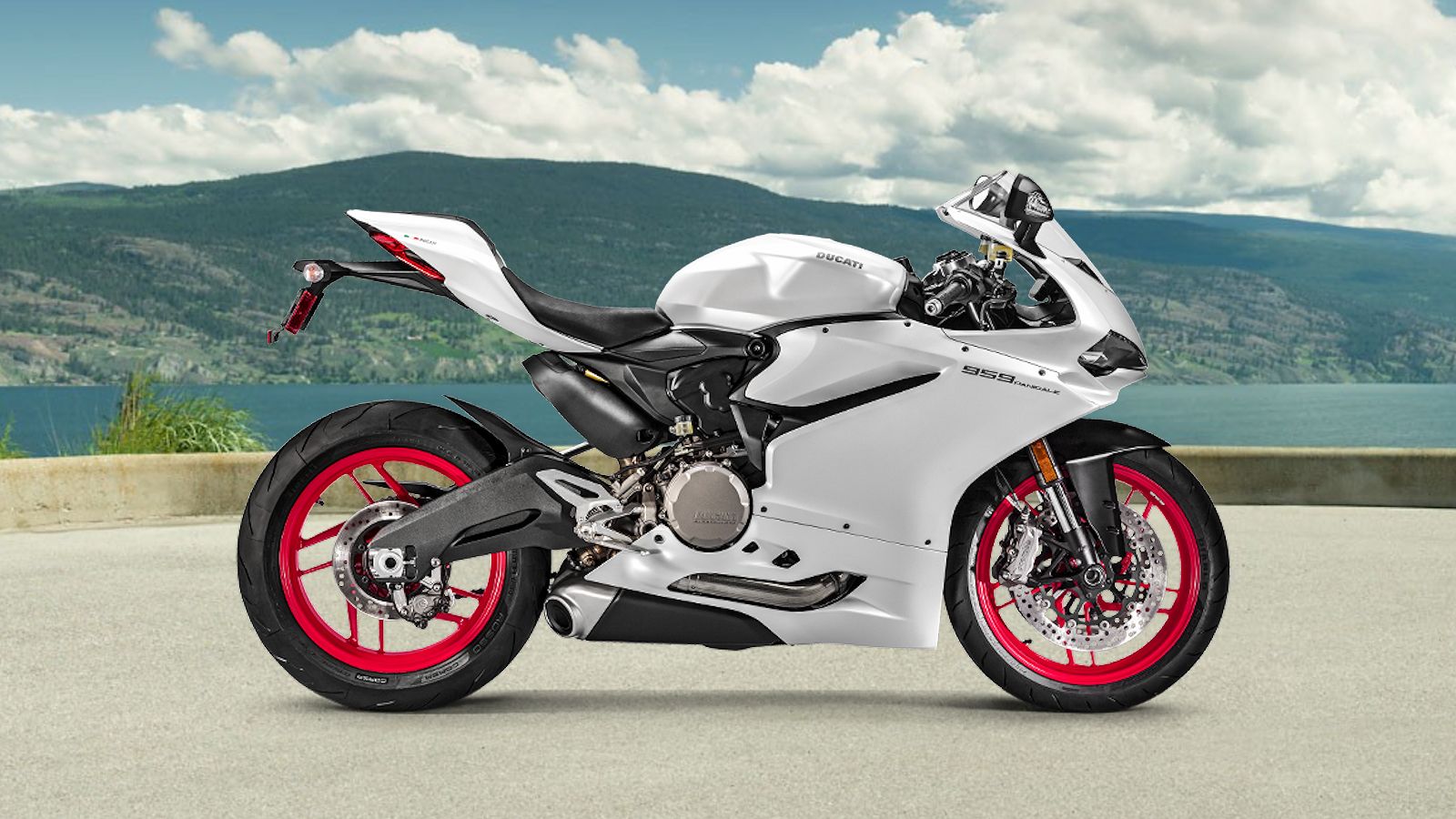Like all the major players on the world stage, Ducati offers (relatively) street-friendly models in the 959 Panigale and 959 Panigale Corse for 2019. This pair showcases the Italian giant's performance chops from the brushed-up stressed-skin structure all the way down to the newly-tuned innards of the 955 cc engine to compete against the other top-shelf, racebike-like offerings. Top-shelf electronics finish off the package to give them all the rider aids and safety systems you can reasonably expect at almost any price point, so you have a chance of keeping it dirty-side down while you raise your riding game.
2019 Ducati 959 Panigale / 959 Panigale Corse
- Make: Array
- Model: 2019 Ducati 959 Panigale / 959 Panigale Corse
- Engine/Motor: L-Twin
- [do not use] Vehicle Model: Array
2019 Ducati 959 Panigale Design
The factory's racing DNA is on display in the 2019 959 Panigale for consumption by us mere mortals in the general riding public. The “959” siblings borrow from their big brother the Panigale 1299, but with some subtle variations of their own. A newly widened front fairing and bubble screen lead the way with improved aerodynamics meant to maximize penetration and reduce drag along with the refurbished headlight arrangement that nevertheless maintains the aggressive “angry eyes” look typical of the family.
Since it's a proper streetbike that allows for the option of racing instead of a full-on race machine, the 959 necessarily has to carry mirrors and turn signals, but the factory wisely combined those two features. Not only does that clean up the front end, but it also makes it easier to remove the weight they add for actual track days if you're into that sort of thing.
The lateral air-intake ports were enlarged to make better use of the ram-air effect at the bike's entry and get a cheap boost to the engine's volumetric efficiency. Below the lights, a cowl scoop opens wide to closely engulf the front wheel and increase the all-up-front general look of the Panigale, and of course, it doubles as a shroud that forces cooling air through the radiator and engine compartment. The enclosure continues down to a full chin fairing and belly pan to leave quite a bit to the imagination and leave us with but a glimpse of the innards.
The 4.5-gallon fuel tank rocks a wide flange up top with a definite wane toward the rear in order to form a generous knee pocket and meet the narrow waist. Clip-ons pull the rider forward with high, jockey-mount footpegs to keep your training wheels out of the way -- even with a knee/elbow down -- and a deep-scoop saddle provides the fifth point of contact with an ample butt stop to keep the pilot in place. That last is of particular importance given the performance profile we're dealing with here, but we'll get to more on that later.
Since this is a bike that's meant -- more or less -- for everyday use, the tapered tail comes with a pillion pad, and there's a set of flip-up, billet-aluminum footpegs bolted to the subframe so you can share the fun with a friend. The taillight is recessed in the tip of the tail, but the blinkers and tagholder is mounted to a short mudguard that, like the mirrors and passenger pegs, can be quickly struck from the bike as a unit to pare down for race days. Oh, and it goes without saying that these Panigales are pure sex on wheels from an aesthetic standpoint.
2019 Ducati 959 Panigale Chassis
Rather than going with the usual underframe support system, Ducati opted to use a monocoque structure that uses the body panels and engine as stressed units to arrive at its final rigidity. As you'd expect, that shaves quite a bit of weight off the final tally to put the base 959 at 387.2 pounds, and the Corse at 386.9 pounds, dry. Yeah, I know we don't ride dry bikes, but that's the metric we have to work with for now.
A die-cast, yoke-style aluminum swingarm finishes out the bones and contributes to the low weight as well with a 4 mm lower pivot point (versus the 899) and a 51/49 split on the weight distribution. The steering head sets a rake angle of 24 degrees with 3.78 inches of trail to make the Panigale downright eager in the corners, and both models come with a steering damper to take the edge off the kickback forces.
A set of 17-inch, light-alloy rims round out the rolling chassis with ZR-rated Pirelli Diablo Rosso Corsa hoops in a 120/70 up front opposite a 180/60, and the tires rock a three-zone, multi-compound construction that delivers the goods. Dual, Brembo monobloc M4.32 calipers bite 320 mm front discs with a 245 mm disc and twin-piston anchor to slow the rear, all under the Bosch ABS that comes as part of the stock equipment package and serves as the first line of traction insurance.
At this point, the base model and Corse diverge in their gear. The base 959 rides on 43 mm Showa BPF stems with a Sachs monoshock out back while the Corse rocks Öhlins NIX30 forks and a TTX36 to take care of business. No matter which you choose, you can count on the full spectrum of adjustments.
|
Frame: |
Monocoque Aluminum |
|
Front suspension: |
|
|
└ 959 Panigale: |
Fully adjustable Showa BPF fork. 43 mm chromed inner tubes |
|
└ 959 Panigale Corse: |
Fully adjustable Öhlins NIX30 with TiN treatment. |
|
Rear suspension: |
|
|
└ 959 Panigale: |
Fully adjustable Sachs unit. Aluminum double-sided swingarm |
|
└ 959 Panigale Corse: |
Fully adjustable Öhlins TTX36 unit. Aluminum double-sided swingarm |
|
Rake: |
24° |
|
Trail: |
96 mm (3.78 in) |
|
Front brake: |
Dual320 mm semi-floating discs, radially mounted Brembo monobloc M4.32 4- piston calipers, with Bosch ABS as standard |
|
Rear brake: |
245 mm disc, 2-piston caliper, with Bosch ABS as standard |
|
Wheel travel (front/rear): |
120 mm (4.72 in) / 130 mm (5.12 in) |
|
Rear wheel: |
10 spokes light alloy 5.50” x 17” |
|
Front tire: |
Pirelli Diablo Rosso Corsa 120/70 ZR17 |
|
Rear tire: |
Pirelli Diablo Rosso Corsa 180/60 ZR17 |
2019 Ducati 959 Panigale Drivetrain
You can't really see much of it, but the engine is still the metaphorical gem while the rest of the bike is just the setting. No matter which model you pick, you'll get the same 955 cc powerplant. It's a Duc, so naturally, it runs the signature Desmodromic valvetrain that uses a pull-closed cam rather than a return spring to close the poppets in the four-valve heads; a system that eliminates the harmonic valve float you can get with the more common closure. Once upon a time, the Desmo system was a relatively high-maintenance item, but the factory has it tuned for a 7,500-mile service interval that fits with the other regular service considerations.
The liquid-cooled L-Twin plant is massively oversquare with a 100 mm bore and 60.8 mm stroke, and it comes with a sizzlin' hot, 12.5-to-1 compression ratio that demands only the finest road champagne. New con-rods connect to the pistons via Diamond-Like Carbon treated wrist pins, and in the bottom end we find a new crank-journal oiling system that marks a first for a Superquadro engine.
Dual, 62 mm oval throttle bodies manage the induction with a pair of injectors per cylinder and a Ride-by-Wire throttle control and a host of rider aids that include Traction- and Engine-Brake Control along with a Power Modes function that lets you tailor the power delivery. Power flows through a slipper clutch adding yet another layer of protection for the rear contact patch, and the six-speed transmixxer comes with the Ducati Quick Shift feature that allows for seamless shifts sans clutch actuation.
What does that get us? Well, the mill churns out a solid 150 ponies at 10,500 rpm with 75 pound-feet of torque at a lofty 9 grand even to turn in a top speed of 169 mph, if you have the nerve for it.
|
Engine: |
Superquadro: L-twin cylinder, 4 valve per cylinder, Desmodromic, liquid cooled |
|
Displacement: |
955 cc |
|
Bore x Stroke: |
100 mm x 60.8 mm |
|
Compression ratio: |
12.5:1 |
|
Power: |
150 hp (110 kW) @ 10,500 rpm |
|
Torque: |
75 lb-ft (102 Nm) @ 9,000 rpm |
|
Fuel injection : |
Mitsubishi electronic fuel injection system. Twin injectors per cylinder. Full Ride-by-Wire elliptical throttle bodies |
|
Exhaust: |
2-1-2 system with catalytic converter and 2 lambda probes. Stainless steel pre- silencer + twin aluminum side mufflers |
|
Gearbox: |
6 speed with Ducati Quick Shift (DQS) |
|
Primary drive: |
Straight cut gears; Ratio 1.77:1 |
|
Ratio: |
1=37/15 2=30/16 3=27/18 4=25/20 5=24/22 6=23/24 |
|
Final drive: |
Chain; Front sprocket 15; Rear sprocket 43 |
|
Clutch: |
Slipper and self-servo wet multiplate clutch with hydraulic control |
2019 Ducati 959 Panigale Pricing
The base 959 Panigale rolls for $15,495 in Ducati Red or Arctic White Silk. If you want that Corse yummy-goodness, be prepared to shell out $17,895 in the red/white/black Corse livery.
|
Model: |
959 Panigale |
959 Panigale Corse |
|
Instrumentation: |
Full LCD display |
Full LCD display |
|
Safety Equipment: |
ABS, Ducati Traction Control (DTC),Engine Brake Control (EBC), Riding Modes |
ABS, Ducati Traction Control (DTC),Engine Brake Control (EBC), Riding Modes |
|
Standard Equipment: |
Power Modes, DQS, Fully RbW, Steering damper |
Power Modes, DQS, Fully RbW, Öhlins steering damper, Lithium-ion battery, Ready for DDA+ with GPS module |
|
Warranty: |
24 months unlimited mileage |
24 months unlimited mileage |
|
Colors: |
Ducati Red, Artic White Silk |
Ducati Corse Livery |
|
Price: |
$15,495 |
$17,895 |
2019 Ducati 959 Panigale Competitors
There is certainly no shortage of “Racebike-lite” models on the market right now, but I'm going to focus on one of my faves; the YZF-R1 from Yamaha to go up against the Ducati 959 Panigale. While the Japanese ride doesn't quite match the sexy curves of the Eye-Tie, it does have charms of its own, and perhaps most importantly, it displays a function-driven form that means business.
The Tuning Fork Company leads off with a ram-air port to match the Ducati in that respect, and the hang-on gear such as the integrated mirror/turn signals and rear mudguard/blinker/tag assembly are made for easy removal ahead of a track day. Like the Duc, the R1 rocks a p-pad and passenger footpegs so you can take a friend on your road adventures, but also like the Panigale, there are much better candidates on the market if you want your passenger to have any kind of comforts.
Yamaha uses a Deltabox frame for support instead of a monocoque system as with the 959, but the suspension comes with the full trifecta of adjustments to break even with the Duc where it counts. Yammy's choice of power is the 998 cc Crossplane Concept plant that churns out 190 ponies at the shaft, and 73.2 pound-feet of torque against the 150/75 from the Superquadro for a definite advantage. Top speed on the YZF clocks in at 182 mph for another minor victory, but if you're actually racing on a closed circuit, quickness and handling trump top speed, and skill level represents an important variable that raw power alone will likely never overcome.
Yamaha runs with lean-sensitive traction control, launch control, slide control and a quickshifter, so it's a match for the Duc across the electronics as well. The stickers are similar as well with the Yamaha YZF-R1 rolling for $16,699 to fall in the middle of the range posed by the Panigale 959 and Corse.
monocoque0}
“It's a game of inches, and the similarities between these two just drive that point even further home. Honestly, brand/nationality loyalty and aesthetic taste will likely be the deciding factors here. If you think that's a bad thing, I'd point out that such similarities mean both companies are right up against the edge of the current performance envelope for the given displacement, and they keep forcing each other to improve with the consumer as the ultimate winner no matter which way you go.”
He Said
My wife and fellow motorcycle writer, Allyn Hinton, says, “One thing I didn't like about the 959 Panigale is that it was hot. Even when moving, there was a lot of heating washing up your legs, which would take it off my 'potential commuter' list unless you have an unimpeded shot to work with very few stops. Other than that, it's lightweight and surprising comfortable for a supersport bike.”
She Said
|
Engine & Drivetrain: |
|
|
Engine: |
Superquadro: L-twin cylinder, 4 valve per cylinder, Desmodromic, liquid cooled |
|
Displacement: |
955 cc |
|
Bore x Stroke: |
100 mm x 60.8 mm |
|
Compression ratio: |
12.5:1 |
|
Power: |
150 hp (110 kW) @ 10,500 rpm |
|
Torque: |
75 lb-ft (102 Nm ) @ 9,000 rpm |
|
Fuel injection : |
Mitsubishi electronic fuel injection system. Twin injectors per cylinder. Full Ride-by-Wire elliptical throttle bodies |
|
Exhaust: |
2-1-2 system with catalytic converter and 2 lambda probes. Stainless steel pre- silencer + twin aluminum side mufflers |
|
Gearbox: |
6 speed with Ducati Quick Shift (DQS) |
|
Primary drive: |
Straight cut gears; Ratio 1.77:1 |
|
Ratio: |
1=37/15 2=30/16 3=27/18 4=25/20 5=24/22 6=23/24 |
|
Final drive: |
Chain; Front sprocket 15; Rear sprocket 43 |
|
Clutch: |
Slipper and self-servo wet multiplate clutch with hydraulic control |
|
Chassis: |
|
|
Frame: |
Monocoque Aluminum |
|
Front suspension: |
|
|
└ 959 Panigale: |
Fully adjustable Showa BPF fork. 43 mm chromed inner tubes |
|
└ 959 Panigale Corse: |
Fully adjustable Öhlins NIX30 with TiN treatment. |
|
Rear suspension : |
|
|
└ 959 Panigale: |
Fully adjustable Sachs unit. Aluminum double-sided swingarm |
|
└ 959 Panigale Corse: |
Fully adjustable Öhlins TTX36 unit. Aluminum double-sided swingarm |
|
Rake: |
24° |
|
Trail: |
96 mm (3.78 in) |
|
Front brake: |
Dual320 mm semi-floating discs, radially mounted Brembo monobloc M4.32 4- piston calipers, with Bosch ABS as standard |
|
Rear brake: |
245 mm disc, 2-piston caliper, with Bosch ABS as standard |
|
Wheel travel (front/rear): |
120 mm (4.72 in) / 130 mm (5.12 in) |
|
Rear wheel: |
10 spokes light alloy 5.50” x 17” |
|
Front tire: |
Pirelli Diablo Rosso Corsa 120/70 ZR17 |
|
Rear tire: |
Pirelli Diablo Rosso Corsa 180/60 ZR17 |
|
Dimensions & Capacities: |
|
|
Seat height: |
32.48 in (830 mm) |
|
Wheelbase: |
56.34 in (1,431 mm) |
|
Fuel tank capacity: |
4.5 gallon (17 l ) |
|
Fuel economy: |
42 mpg (5.6 l/100 km) |
|
Number of seats: |
Dual seat |
|
Details: |
|
|
Instrumentation: |
Full LCD display |
|
Safety Equipment: |
ABS, Ducati Traction Control (DTC),Engine Brake Control (EBC), Riding Modes |
|
Standard Equipment: |
|
|
└ 959 Panigale: |
Power Modes, DQS, Fully RbW, Steering damper |
|
└ 959 Panigale Corse: |
Power Modes, DQS, Fully RbW, Öhlins steering damper, Lithium-ion battery, Ready for DDA+ with GPS module |
|
Warranty: |
24 months unlimited mileage |
|
Colors: |
|
|
└ 959 Panigale: |
Ducati Red, Artic White Silk |
|
└ 959 Panigale Corse: |
Ducati Corse Livery |
|
Price: |
|
|
└ 959 Panigale: |
$15,495 |
|
└ 959 Panigale Corse: |
$17,895 |
Further Reading
Yamaha YZF-R1/ R1M
See our review of the Yamaha YZF-R1/ R1M.
Ducati 1299 Panigale R Final Edition
See our review of the Ducati 1299 Panigale R FE.
Ducati
Read more Ducati news.

